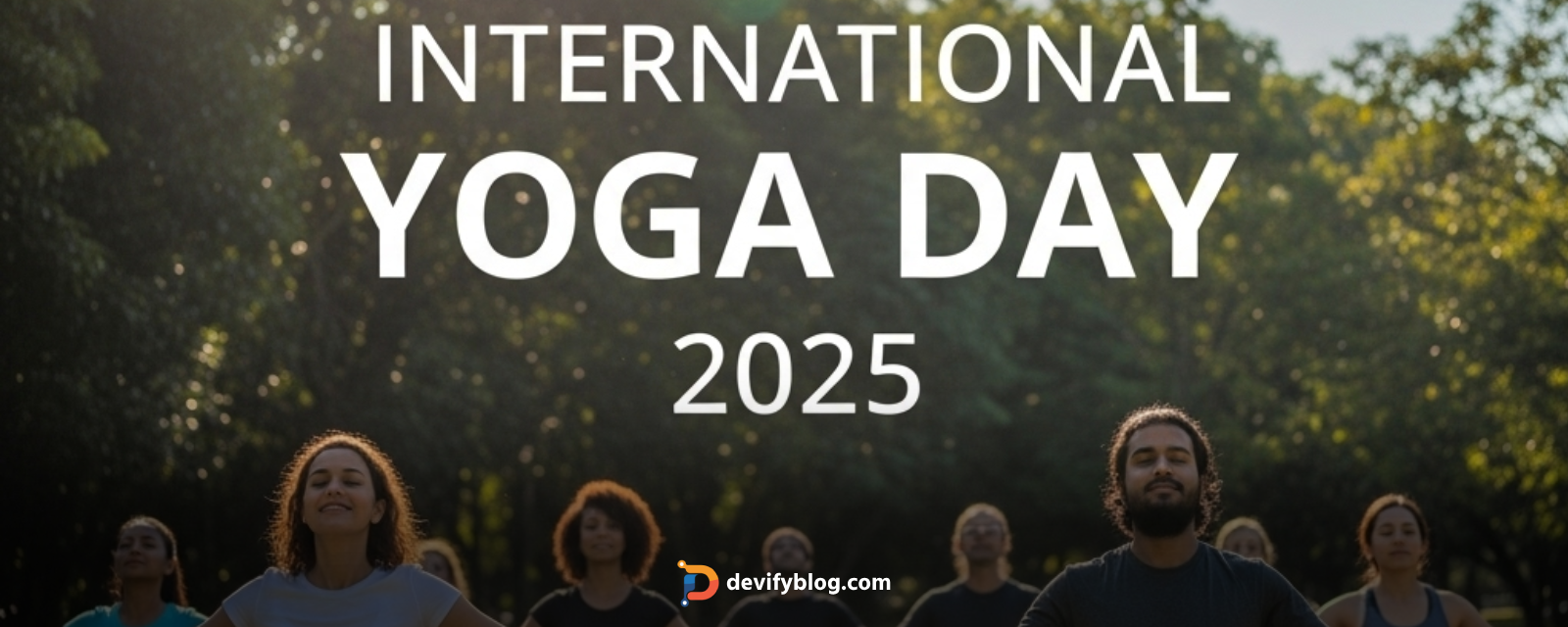International Yoga Day is celebrated on June 21st, when people from all over the world come together to stretch, breathe, and meditate in unison. Yoga is a spiritual, physical, and mental discipline that has crossed national and cultural borders and is more than just a type of exercise. With roots in Indian philosophy, this 5,000-year-old practice has evolved into a global wellness movement.
International Yoga Day was established by the UN in 2014 to encourage peace, awareness, and good health. In the spirit of peace and well-being, people from all walks of life gather in parks, workplaces, beaches, and studios throughout the day, from Times Square in New York to temples in Tokyo.
International Yoga Day's History
India’s Proposal at the United Nations
Indian Prime Minister Narendra Modi is credited with establishing International Yoga Day when he spoke to the United Nations General Assembly (UNGA) on September 27, 2014, and promoted the notion of setting aside a day for yoga practice. He said in his speech:
"Yoga is an invaluable gift of India’s ancient tradition. It embodies unity of mind and body; thought and action; restraint and fulfillment; harmony between man and nature."
With 177 co-sponsors, the most of any UNGA resolution, the proposal garnered tremendous international support and was one of the most quickly adopted declarations in UN history.
The longest day of the year in the Northern Hemisphere, the summer solstice, falls on June 21st. In yoga, it is very important since it symbolizes the change to Dakshinayana, or the sun's trip south. It is considered to be the day that Lord Shiva, the first yogi or Adi Yogi, started teaching his pupils, the Saptarishis, the principles of yoga.
What is Yoga?
The Sanskrit root "Yuj," which meaning to connect or merge, is where the word "yoga" originates. It represents the merging of personal and cosmic consciousness. Yoga is a complete method that balances the mental, emotional, spiritual, and physical facets of life; it is not just a fitness regimen.
- Asanas (Postures): Exercises that maintain the body's flexibility and well-being.
- Breathing practices, or pranayama, are methods for channeling and managing life energy, or prana.
- Meditation, or dhyana, is a practice that raises consciousness and calms the mind.
- Moral guidelines for social and personal behavior are known as the yamas and niyamas (ethical disciplines).
Yoga is deeply entrenched in ancient Indian scriptures like The Vedas, The Upanishads, Patanjali’s Yoga Sutras.
Patanjali, the founder of classical yoga, described the Eight Limbs of Yoga (Ashtanga Yoga), which leads practitioners from a moral foundation to the ultimate state of self-realization (Samadhi).
How People Around the World Celebrate International Yoga Day
India: The Birthplace of Yoga-
Large-scale yoga camps, government-sponsored activities, cultural shows, and workshops are held in India to commemorate the day. Famous landmarks such as Red Fort (Delhi), Mysore Palace (Karnataka), Sabarmati Riverfront (Ahmedabad). Host thousands of people who are following the Common Yoga Protocol, which was created by the Ministry of AYUSH. Yoga classes are often held in jails, workplaces, schools, and hospitals to encourage discipline and well-being.
United States-
The wellness culture in America has embraced yoga. Mass yoga gatherings in parks, such as the well-known Times Square Yoga Session, when thousands of people practice together, are a way for cities like New York and Los Angeles to celebrate.
Local health departments support communal yoga, and studios provide free or heavily subsidized classes.
Europe-
In countries including the UK, Germany, and France, Yoga Day is commemorated with live-streamed classes, meditation sessions in public spaces, and integration with local medical activities.
In Italy, yoga is being promoted as a tool for mental health in collaboration with psychiatrists and wellness coaches.
Asia and Middle East-
Yoga has become more and more popular in nations like China, Japan, the United Arab Emirates, and Iran. Indian diplomatic missions frequently organize festive celebrations in conjunction with local populations. Yoga has been utilized for stress alleviation and healing even in areas of conflict.
Why Yoga Is More Important Than Ever in the World
Yoga is a holistic solution that addresses people's bodily and emotional well-being as well as social harmony and sustainable living in today's fast-paced, stress-driven, and environmentally strained society. Regular yoga practice promotes blood circulation, strengthens immunity, facilitates digestion, improves flexibility, improves posture, and builds muscular and joint strength. Yoga is a natural and preventive way to improve health as lifestyle problems like diabetes, hypertension, and obesity spread over the world.
Yoga provides a mental haven from burnout, despair, and worry. It is being used more and more in therapeutic treatments for disorders like PTSD, ADHD, substance misuse, and sleeplessness with methods like mindfulness, meditation, and controlled breathing. Yoga helps increase serotonin, the hormone linked to pleasure and well-being, while lowering cortisol, the body's main stress hormone, according to research from prestigious universities like Harvard Medical School and AIIMS Delhi.
Beyond its own advantages, yoga promotes communal harmony by fostering virtues like empathy, patience, and compassion. Yoga's central tenet of union promotes harmony, understanding, and peace between people and communities in a world where ideas and identities frequently divide people. Additionally, it fosters a way of living based on mindfulness and sustainability. In order to lessen their environmental impact, many yoga practitioners naturally lean toward plant-based diets, eco-conscious living, and simplicity. This attentive way of life reflects the ancient Indian philosophy of "Vasudhaiva Kutumbakam"—the world is one family—and is in perfect harmony with the Sustainable Development Goals (SDGs) of the UN.
In simple terms, yoga serves as a worldwide link to physical vigor, mental clarity, communal peace, and planetary balance in addition to being a tool for personal wellness.
Conclusion: Yoga as a Way of Life
Doing asanas for a day is only one aspect of International Yoga Day. It serves as a reminder that yoga is a way of life that is holistic, harmonious, and conscientious. Yoga serves as a timeless remedy in a world full of illness, anxiety, and division by reestablishing our connection to nature, one another, and ourselves.
You don't need to be flexible to perform yoga; you only need to be willing, so spread out your mat, take a deep breath, and start on June 21.




Login to leave a comment.